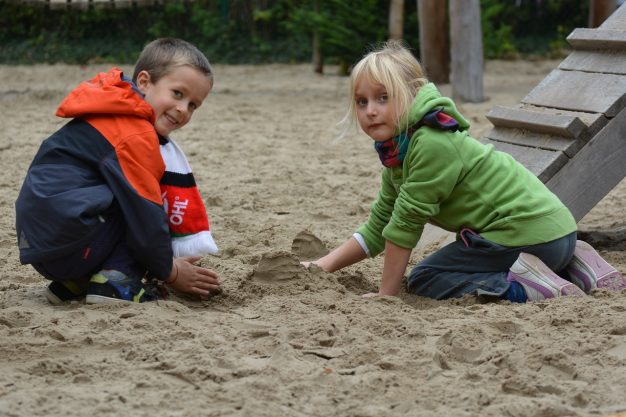
School readiness data helps shape neighbourhoods for young children
To stay informed about how children are doing, many communities across Canada and around the world are using the Early Development Instrument (EDI). This Canadian-made research tool, developed at the Offord Centre for Child Studies at McMaster University, measures developmental changes in populations of children.
Children’s development is influenced by a variety of factors – family environment, socioeconomic conditions, neighbourhood influences, availability of early child development services, and government policies. By knowing how children are doing, it is possible to identify problems, provide effective help and keep track of whether things are improving.
Early Development Instrument (EDI)
The EDI is a teacher-completed questionnaire that measures kindergarten children’s ability to meet age appropriate development expectations in 5 general areas:
- Physical health and well-being
- Social competence
- Emotional maturity
- Language and cognitive development
- Communication skills and general knowledge
Once the EDI is completed on each individual child, the results are grouped to give a snapshot of how children are doing in schools and neighbourhoods. Communities are provided with a series of maps that show results at a neighbourhood level. Children who fall below the standardised cut off scores are referred to as vulnerable.
EDI data can be overlaid with other population level data and provides communities and policy makers with relevant information to monitor children’s development and to develop effective program and policy responses that will help young children thrive.
Across the province of British Columbia, Canada, city stakeholders, along with others (health, education, child protection, social services) use EDI data to engage in community conversations that result in policies and strategies that help ensure children get a healthy start in life. This can result in stronger collaboration between systems that support children, leveraged funding, health and wellness strategies, culturally specific programs and effective kindergarten transition. EDI data can also inform policies on affordable housing, food security, quality child care programs and neighbourhood safety.
EDI data
EDI data results in collaborative neighbourhood strategy to support Richmond children
For the last 10 years, Richmond, a city in Western Canada, has used EDI data to inform policy, develop partnerships and adapt programming. One recent example is in the neighbourhood of Richmond City Centre. At 43%, this neighbourhood has the highest proportion of vulnerable children based on EDI data, in Richmond. It also has high child poverty, large numbers of immigrant and refugee families and high mobility – with almost 50% of children at a local elementary school moving within the school year. City Centre is also the fastest growing neighbourhood in Richmond and the child and youth population is expected to grow by roughly 70% (from 7,500 to 13,000) by 2021.
EDI data has resulted in organisations aligning resources and systems so that young children in this neighbourhood are better supported. Over $85,000 a year in funding has been targeted to a number of City Centre early child development programmes. These multilingual programs meet identified needs of City Centre families and are delivered in partnership by non-profit and public organisations. Richmond has also received funding for a multi-year, early years place-based initiative, United Way of the Lower Mainland City Centre Avenues of Change, which uses EDI data and research, on vertical families and public parenting, to increase child and family connections; to each other and to neighbourhood resources.
Author: Helen Davidson
Photo Credit: Photo by Ben Kerck https://pixabay.com/en/children-play-boy-girl-people-1006255/
Resources:
Video: The EDI and the Early Years (4:07)
Website: Offord Centre for Child Studies: Early Development Instrument
EDI Regional and Neighbourhood Maps
Vertical Families:
Karsten L. Middle-class households with children on vertical family living in Hong Kong. Habitat International. 2015;47:241-7. Available from: http://www.sciencedirect.com/science/article/pii/S0197397515000247
Mizrachi D, Whitzman C. Vertical living kids: creating supportive high-rise environments for children in Melbourne. Melbourne, AU: University of Melbourne; 2009. Available from: http://soac.fbe.unsw.edu.au/2009/PDF/Mizrachi%20Dana_Whitzman%20Carolyn.pdf.




